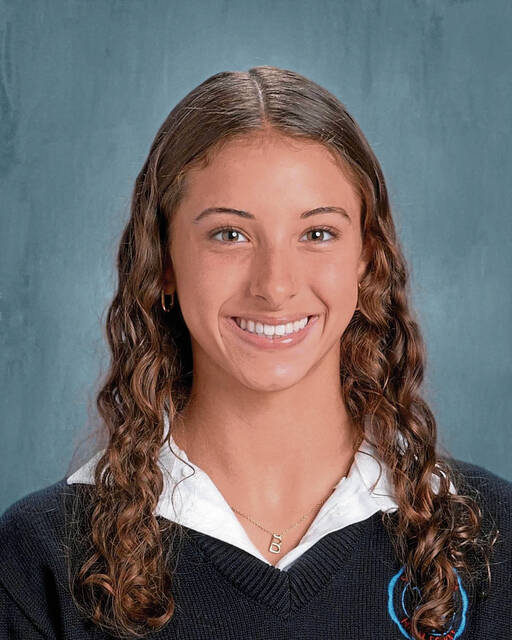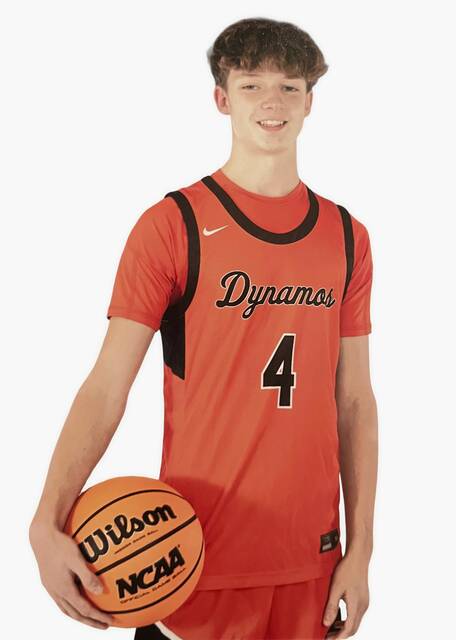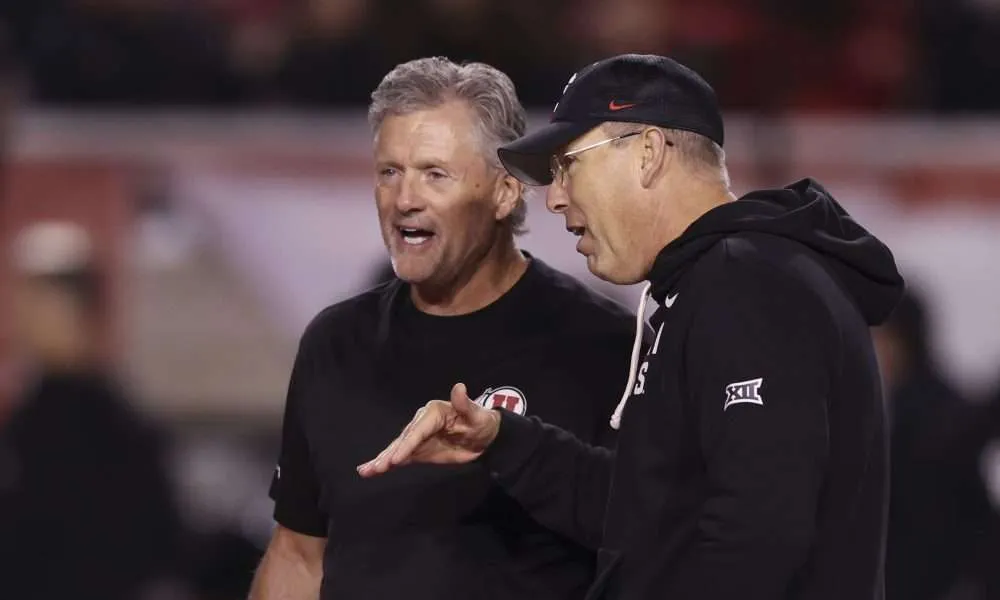Rec Sports
Billings Skyview softball staying in the present while building for the future
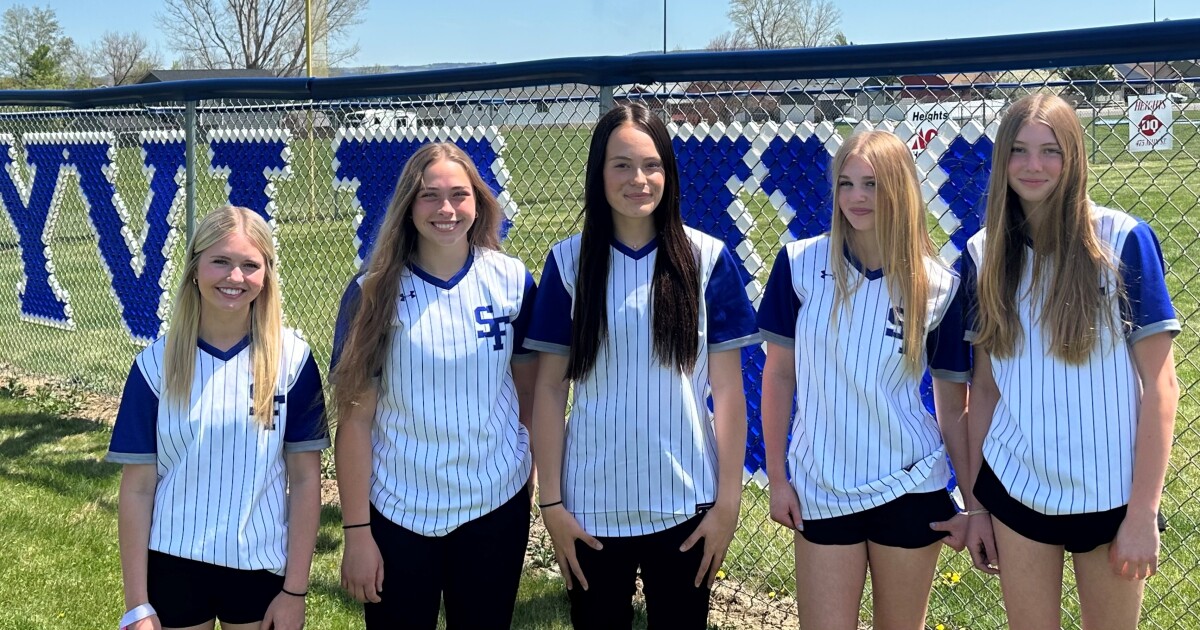
BILLINGS — Billings Skyview softball coach Michael Falcon has been with the program for 15 seasons mainly as head coach from 2009-12 and 2016 to the present. In that time, he said, never has he had more than one freshman in his starting lineup.
This season has busted that norm, however.
“I did not expect us to have five freshmen make varsity, and at some point, out of those five, we’d have four of them start,” Falcon said. “So, it’s kind of a cool thing.”
Post-COVID, the Falcons have had just one season where the roster was dominated by seniors. That was in 2022, when there were eight.
Other than that season, Falcon has mostly operated with younger rosters, including in 2023 when there were just two seniors. And though this season features three seniors — Kacie Morris, Lexi Johnston and Rebekah Nickisch — the program might be the youngest overall it’s been in a while.
Eighteen of the 23 players out for softball are sophomores or freshmen.
“We have a good mix,” Falcon said. “Our older kids have welcomed in the younger kids and helped push them and they’ve really blended in well with the group of girls we have.”
The younger group, more than just filling out a roster, have been important pieces to complement the veterans.
Second baseman Ruby Sheridan and catcher Ella Martin have spearheaded the youth movement and have been in the starting lineup since day one.
Teammates on a travel-ball team that placed second at a national tournament this past summer, Sheridan is batting .468 with 12 stolen bases and is tied with Johnston for the team-high in runs scored with 16. Martin, the team’s catcher, is hitting .343.
Among the other freshmen, Kaylee Baker has earned the starting designated player spot in the lineup with her .533 average and 13 steals, which is tops in Class AA. Hadley Moore was the team’s MVP out of preseason camp, according to Falcon, and a starter to begin the season.
But she suffered a broken finger early on, and she’s just returned to limited action, mostly as a courtesy runner. Falcon hopes to have her back in the regular lineup soon. And pitcher Harpar Lindseth is the first in line to back up sophomore pitcher Brooklyn Arce.
“I think we’ve done pretty well,” Sheridan said. “Since our team is young, our chemistry isn’t 100% yet, but we’re definitely getting better with that.”
Consistency is always elusive with young rosters, and that’s true with the Falcons. They have had strong showings against some of the teams ahead of them in the Eastern AA standings, like a 17-7 win over Billings West or a tight 3-1 loss to Belgrade.
A recent back-to-back series against Gallatin encapsulated the Falcons’ season. They were no-hit on Wednesday by the Raptors’ Olivia Klemann in a 5-0 loss, but on the next day they battled back from deficits of 3-1, 5-1 and 7-5 to tie the score at 7-7 before eventually losing 13-9 to the same Gallatin team.
“We could have beaten some of the teams that we’ve lost to because, I don’t know, we get down sometimes,” Martin said. “But I think we’re in a good spot right now.”
As for the more seasoned players, Johnston leads the team with 20 RBIs to go along with her .340 batting average. Junior Taylor Gallardo is hitting .348 with 18 RBIs. And Arce has logged 86% of the team’s innings in the circle.
The Falcons haven’t had a winning season since 2021 when they finished 13-10. Since then, they’ve posted records of 11-15, 2-16 and 7-15. With three regular-season games to go, they’re fighting to reach the .500 level this season (6-8, 4-6 in Eastern AA) and have secured the fifth spot in the conference, which means an upcoming state playoff spot.
Regardless of how this season ends up, Falcon thinks his squad’s mix of veteran leadership and newcomers has walked that thin line between rebuilding a program without forgoing the current season.
“The youth that we have on varsity isn’t there because we didn’t have capable people there,” Falcon said. “They’re there because they are the best people at that spot, and it just so happened that they are young.
“So, we really haven’t had to sacrifice being competitive this year. We’re developing them for the future, but at the same time, we’re being competitive.”
Rec Sports
TWRA Youth Fish Art Contest Now Open


The Tennessee Wildlife Resources Agency (TWRA) is encouraging youth across the state in grades K-12 to submit their original artwork of any Tennessee native fish for the national Art of Conservation: Fish Art Contest. The contest was created by the nonprofit Wildlife Forever to encourage youth to become connected to the outdoors.
The contest is free to enter, and students can submit one 2D piece and one 3D piece. All participants must enter original artwork of a Tennessee fish in a natural habitat and may not replicate another artist’s work. Photos or videos used as a source material for inspiration of the artwork are allowed. Goldfish, guppies, bettas, and koi are not eligible for this contest.
Additionally, TWRA is adding its own specialty award this year, The Bill Dance Signature Lakes Award – in honor of the legacy of fishing legend Bill Dance and the TWRA’s work to develop premier fishing destinations across the state. To be considered for the award, students should enter artwork of largemouth or smallmouth bass or art featuring bass fishing.
All submissions must be entered through an online entry form. More information regarding rules, submission form, and requirements can be found on the Wildlife Forever Art of Conservation website. The last day for submitting artwork is Feb. 28, 2026.
The Tennessee Wildlife Resources Agency is responsible for protecting, managing, and conserving fish and wildlife species for the benefit of Tennesseans and visitors. The Agency also maintains public safety through law enforcement and safety education on waterways.
MORE NEWS
Please Join Our FREE Newsletter!
Rec Sports
Centennial Cougars beat Champlin Park Rebels – The Rink Live
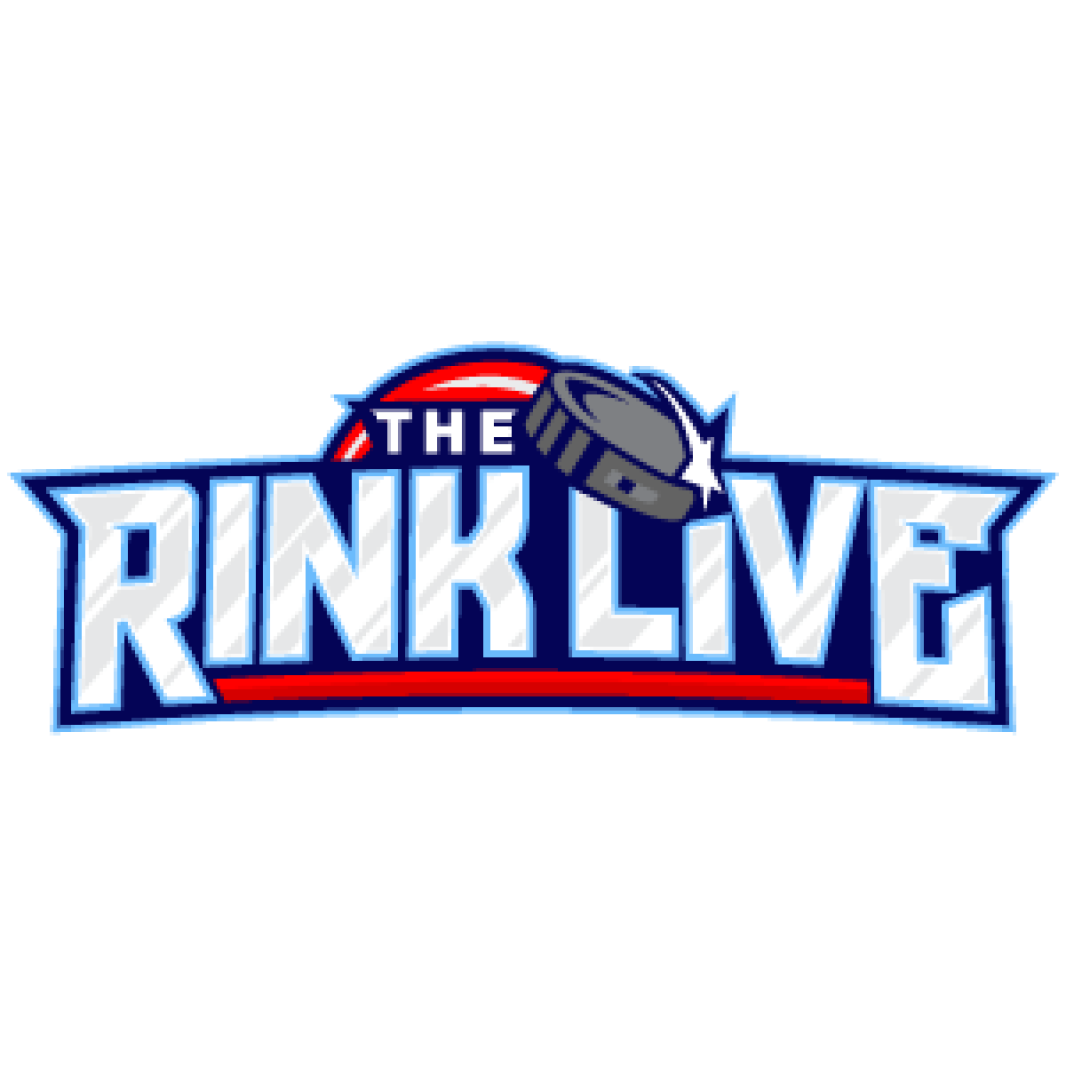
The Centennial Cougars won their game at Centennial Sports Arena against the Champlin Park Rebels on Saturday, Dec. 20, 2025, ending 7-4.
The Rebels took the lead in the middle of the first period, with a goal from Paul Pazandak. Derek Roehl assisted.
The Cougars tied it up 1-1 with a goal from Nick Carls halfway through the first, assisted by Joey Hemr.
Five goals were scored in the second period, and the Cougars led 4-3 going in to the third period.
The Cougars increased the lead to 5-3, only 43 seconds into the third when Cooper Daikawa netted one, assisted by Keegan Julik.
Kaden Johnson made it 6-3 with a goal three minutes later, assisted by Gavin Cunningham.
Paul Pazandak narrowed the gap to 6-4 with a goal three minutes later, assisted by Gabe Contons and Brody Girard.
Gavin Cunningham also increased the lead to 7-4 with a goal eight minutes later.
The teams will face off once again at Champlin Ice Forum on January 9th.
Coming up:
The Cougars will go up against the Forest Lake Rangers at Centennial Sports Arena on Tuesday, Dec. 23, 2025, while the Rebels will battle Maple Grove on Monday, Dec. 29, 2025, at Maple Grove Community Center.
Read more prep coverage
Scoring:
Minnesota, Centennial Sports Arena
6th December 2025
Champlin Park Rebels at Centennial Cougars
7-4
1st period:
Champlin Park Rebels, 1–0 (9:44) Paul Pazandak
Centennial Cougars, 1–1 (12:20) Nick Carls
2nd period:
1–2 (23:20) Kaden Johnson, 2–2 (23:42) Max Peterson, 3–2 (25:30) Rhys George, 3–3 (30:55) Joey Hemr, 3–4 (32:25) Nick Carls
3rd period:
3–5 (41:43) Cooper Daikawa, 3–6 (44:48) Kaden Johnson, 4–6 (47:13) Paul Pazandak, 4–7 (55:39) Gavin Cunningham
Automated articles produced by United Robots on behalf of The Rink Live.
Rec Sports
Dodge County falls to Proctor/Hermantown in a ranked Class A girls hockey game
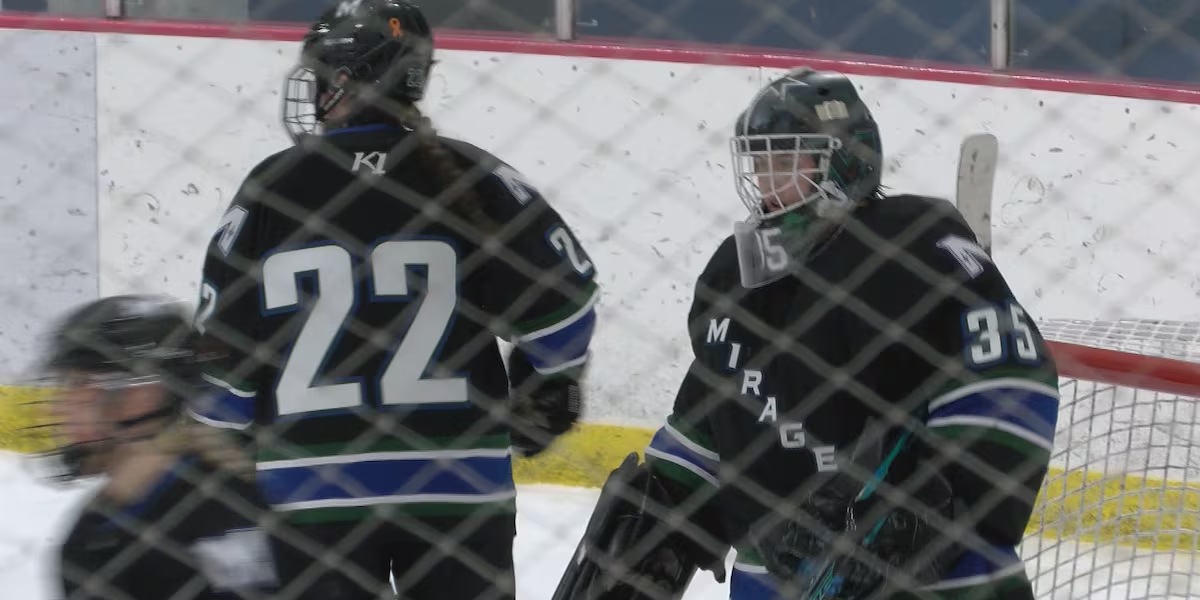
KASSON, Minn. (KTTC) – Two top-ten girls hockey teams in Class A squared off at Dodge County Ice Arena.
The No. 2 Dodge County Wildcats fell behind the No. 9 Proctor/Hermantown Mirage 4-0 after the second period.
Each team scored once in the third period as the Mirage finished the upset win, 5-1.
Dodge County returns to action on December 29. The Wildcats will travel to play the Academy of Holy Angels at 5:00 p.m.
Find stories like this and more in our apps.
Copyright 2025 KTTC. All rights reserved.
Rec Sports
A-K Valley athletes of the week: St. Joseph’s Bella Bartolovic, Springdale’s Robby Simmen
By:
Saturday, December 20, 2025 | 4:17 PM
Bella Bartolovic
School: St. Joseph
Class: Sophomore
Sport: Basketball
Claim to fame: Bartolovic dropped a season-high 27 points against Leechburg on Tuesday. She then followed that up with 19 against Eden Christian on Thursday to lead St. Joseph to a 2-0 week. The sophomore guard leads the Spartans with six double-figure scoring games and 20.5 points per contest.
St. Joseph is 5-2 (3-0) and will prepare for a meeting with Aquinas Academy (6-0, 2-0) on Monday.
What do you believe is the potential of this team, even with it being a young one?
It is a great start, and we look to continue this streak. I believe this team has a lot of potential this season to make it far, even though we’re young.
What has been working well for you as you’ve taken a scoring leap?
I have a very supportive team and coaching staff, which allows me to play without the worry of making mistakes.
If you maintain your scoring, how will you respond when teams begin to put you at the top of the scouting report?
I will take this as a compliment. I will continue to work on improving my game and trusting my teammates.
What can you say about the contributions the team has gotten from senior Kasey Cienik and junior Jocelyn Spinelli?
Their leadership has been very important because they encourage us all to do our best and boost our confidence.
What is a must-do when you have a day off from school and basketball?
Play more basketball
What is the best basketball shoe out right now?
Sabrina’s
What are your plans for the holidays?
To spend time with family and friends
What is your favorite Christmas song?
“Jingle Bell Rock.”
You have a matchup against Aquinas Academy on Monday, a rematch of last year’s No. 2 teams in Section 1-A. What will be the keys to staying undefeated in section play against the Crusaders?
The keys to Monday will be staying composed and working as a team.
Robby Simmen
School: Springdale
Class: Junior
Sport: Basketball
Claim to fame: Simmen went off for a season-high 39 points to lead Springdale to a Section 1-2A win over California on Tuesday. He then scored 15 in an overtime loss to Bentworth on Friday. Simmen has reached double digits in all six games for the Dynamos (2-4, 1-2) and leads them with 20.5 points a game.
After graduating eight seniors last year, how have you and other underclassmen stepped up and filled in leadership roles?
Many of our current juniors and our senior that have been on the team last year know what it takes to be a leader from experiencing our games and practices. The past seniors and our coaches set a great example for us. We stepped up by continuing to do what makes us better as a team, which is lifting each other up as well as giving everyone the confidence they need on and off the court.
What has been the biggest improvement in your offensive game this season?
In the offseason, I work on all of my skills. I feel I improved most in my speed and strength. It gives me a lot more opportunity to be an all-around threat on offense.
In three out of five games this year, the team has had two double-digit scorers. Liam Dexter has two of those games. How have you seen him grow as a player in your three years together?
Liam has always had the skill to do what he does. We’ve played together on a youth basketball team since third grade. His ability to shoot and play in the paint makes him a difficult player to guard.
What is a must-do when you have a day off from school and basketball?
When I’m not playing basketball or in school, I enjoy spending time with my family and friends.
Who is your favorite music artist, and is it the same person for pregame?
My favorite artists are probably Zach Bryan or Drake. Drake is more for pregame, though.
What are your plans for the holidays?
Go spend time with family.
What Christmas movie is a sneaky contender for the best of all time?
“Home Alone.”
Tags: Springdale, St. Joseph
Rec Sports
Commanders young RBs – The Athletic

The Commanders will have nearly two dozen players hit free agency in March, so these final three games are a lot like preseason games, as glorified tryouts. Chris Rodriguez Jr., a Commanders sixth-round pick in 2023, stuck around with the regime change in ’24 and has really come on this season to become the team’s de facto starter after Austin Ekeler went down with an Achilles injury. He will be a restricted free agent in March, and as Washington tries to revamp the entire roster, his play this evening could carry significant weight in deciding his future here.
Rookie Jacory “Bill” Croskey-Merritt could play heavily into that. Bill has shown flashes of his quickness, speed and vision behind the line of scrimmage, and leads the team in both rushing yards (646) and rushing touchdowns (five) through Week 15. But his development into a complete back, who can block and catch passes out of the backfield, will be key to him becoming more of a featured back.
Rec Sports
TWRA Youth Fish Art Contest Now Open


The Tennessee Wildlife Resources Agency (TWRA) is encouraging youth across the state in grades K-12 to submit their original artwork of any Tennessee native fish for the national Art of Conservation: Fish Art Contest. The contest was created by the nonprofit Wildlife Forever to encourage youth to become connected to the outdoors.
The contest is free to enter, and students can submit one 2D piece and one 3D piece. All participants must enter original artwork of a Tennessee fish in a natural habitat and may not replicate another artist’s work. Photos or videos used as a source material for inspiration of the artwork are allowed. Goldfish, guppies, bettas, and koi are not eligible for this contest.
Additionally, TWRA is adding its own specialty award this year, The Bill Dance Signature Lakes Award – in honor of the legacy of fishing legend Bill Dance and the TWRA’s work to develop premier fishing destinations across the state. To be considered for the award, students should enter artwork of largemouth or smallmouth bass or art featuring bass fishing.
All submissions must be entered through an online entry form. More information regarding rules, submission form, and requirements can be found on the Wildlife Forever Art of Conservation website. The last day for submitting artwork is Feb. 28, 2026.
The Tennessee Wildlife Resources Agency is responsible for protecting, managing, and conserving fish and wildlife species for the benefit of Tennesseans and visitors. The Agency also maintains public safety through law enforcement and safety education on waterways.
MORE NEWS
Please join our FREE Newsletter
-

 Motorsports2 weeks ago
Motorsports2 weeks agoSoundGear Named Entitlement Sponsor of Spears CARS Tour Southwest Opener
-
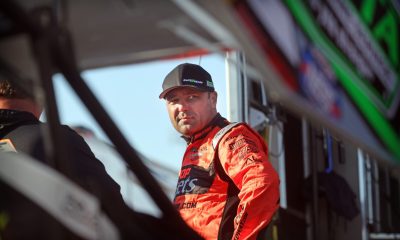
 Motorsports2 weeks ago
Motorsports2 weeks agoDonny Schatz finds new home for 2026, inks full-time deal with CJB Motorsports – InForum
-

 Rec Sports2 weeks ago
Rec Sports2 weeks agoBlack Bear Revises Recording Policies After Rulebook Language Surfaces via Lever
-

 Rec Sports2 weeks ago
Rec Sports2 weeks agoHow Donald Trump became FIFA’s ‘soccer president’ long before World Cup draw
-
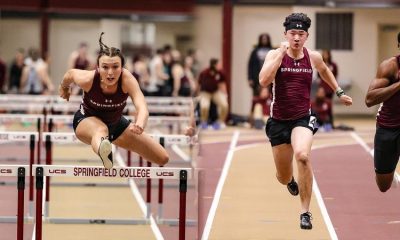
 Sports3 weeks ago
Sports3 weeks agoMen’s and Women’s Track and Field Release 2026 Indoor Schedule with Opener Slated for December 6 at Home
-
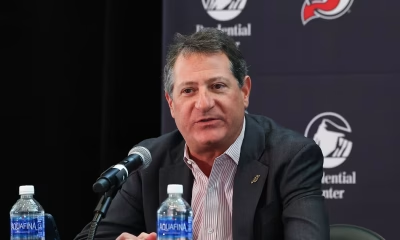
 Rec Sports2 weeks ago
Rec Sports2 weeks agoDavid Blitzer, Harris Blitzer Sports & Entertainment
-

 Motorsports2 weeks ago
Motorsports2 weeks agoJR Motorsports Confirms Death Of NASCAR Veteran Michael Annett At Age 39
-

 Motorsports2 weeks ago
Motorsports2 weeks agoRick Ware Racing switching to Chevrolet for 2026
-
Sports2 weeks ago
West Fargo volleyball coach Kelsey Titus resigns after four seasons – InForum
-
Sports2 weeks ago
Elliot and Thuotte Highlight Men’s Indoor Track and Field Season Opener



